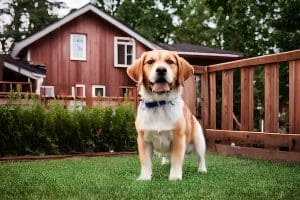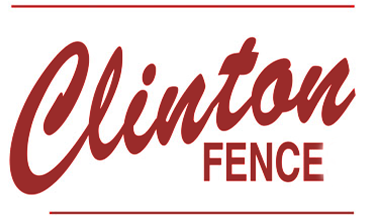Fencing Tips for Pet Owners
Fencing Tips for Pet Owners: Creating a Safe and Secure Environment

An image of a dog with a house in the background.
For pet owners, ensuring the safety and well-being of our furry friends is a top priority. One key aspect of maintaining a secure environment for our pets is having a reliable and pet-friendly fence. A well-designed and properly installed fence can not only keep your pets safe within your property but also protect them from potential hazards outside. In this article, we will explore some essential fencing tips for pet owners, helping you create a safe and secure environment for your beloved companions.
- Choose the Right Type of Fence: Selecting the appropriate type of fence is crucial in ensuring the safety and containment of your pets. A solid fence, such as a wooden or vinyl fence, is an excellent choice as it provides a physical barrier that prevents pets from escaping or being exposed to external dangers. Alternatively, chain-link fences can be effective for containing larger dogs, but they may not be suitable for small or agile breeds. Consider your pet's size, breed, and specific needs when choosing the type of fence that will best meet their requirements.
- Ensure Sufficient Height: The height of your fence is essential to prevent pets from jumping over or climbing over it. Dogs, in particular, are known for their ability to jump surprisingly high, so it's advisable to have a fence that is at least six feet tall. This height will deter most pets from attempting to escape. Additionally, consider adding a secure gate with self-closing hinges and latches to further prevent accidental escapes.
- Mind the Gaps: Pets are notorious for squeezing through small openings or digging under fences. To prevent this, inspect your fence for any gaps or openings that your pet could exploit. Patch up any holes or weak spots with additional fencing materials or use mesh wire to fill in the gaps. Pay attention to the bottom of the fence as well and consider burying chicken wire or installing a barrier to prevent digging.
- Consider Visibility: While privacy fences can provide a sense of seclusion, they can also limit visibility, making it difficult to monitor your pet's activities. Opting for a fence with some visibility, such as picket fences or fences with lattice panels, allows you to keep an eye on your pet while maintaining a secure boundary. This visibility can also help prevent your pets from feeling isolated or anxious.
- Create a Designated Pet Area: If you have a larger yard, consider creating a designated pet area within your property. This can be achieved by installing an additional fence or using landscaping features to create a separate space for your pets to roam freely. This designated area can help prevent your pets from accessing potentially hazardous areas, such as pools, gardens, or areas with toxic plants.
- Regular Maintenance: To ensure the ongoing effectiveness of your pet fence, regular maintenance is crucial. Inspect the fence periodically for any damage, loose boards, or weak spots. Trim any vegetation near the fence that could potentially give your pet a boost to jump over. Additionally, make sure gates are secure and functioning correctly, and repair any damage promptly.
Conclusion:
Creating a safe and secure environment for your pets starts with having a well-designed and properly installed fence. By considering the right type of fence, ensuring sufficient height, closing gaps, maintaining visibility, and creating designated pet areas, you can provide your pets with a safe space to play and explore. Regular maintenance and inspections will help ensure the ongoing effectiveness of your fence. Remember, a well-constructed pet fence not only protects your pets from external hazards but also offers you peace of mind, knowing they are secure within your property.
